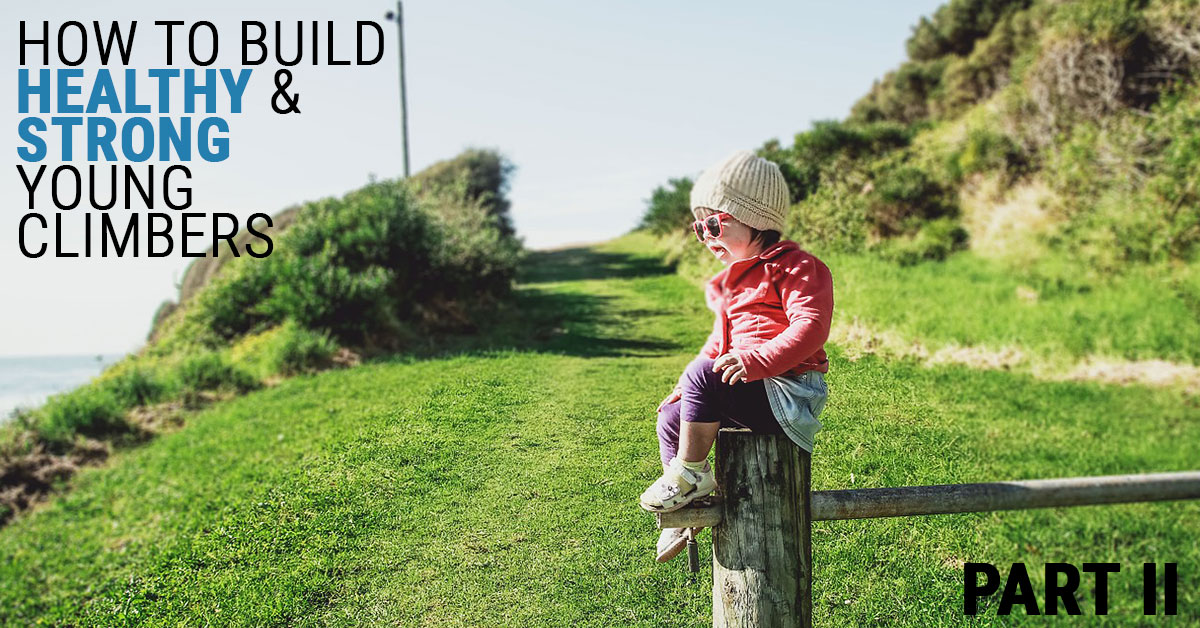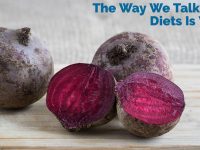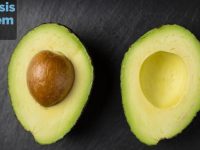Fresh on the heels of Part I—which covered the major needs of a young climber including calories, protein, carbohydrates, and fats—we move on to Part II: vitamins, minerals, and supplements.
Unlike the major nutrients covered in the previous installment, the topics of today’s discussion are minor players—which isn’t to say they are unimportant (far from it), but rather that they require less focus and less concern. Indeed, while the basic differences between starches, fats, and proteins have been known and manipulated for centuries, it’s only been in the past 100 years that we’ve even had the capability to analyze and subsequently manipulate a diet for vitamins and minerals!
The theme of this installment therefore, as you will see, is that taking care of the major needs is still the best way to take care of the minor needs. The few exceptions otherwise are discussed below.
Vitamins & Minerals
By and large, the majority of children in the developed world are amply nourished in most vitamins and minerals. Despite the existence of an entire market devoted to convicing you that your child needs a chewable multivitamin, the reality is that food alone is fully capable of supplying all necessary vitamins and minerals in more than sufficient amounts.
That being said, there are some nutrients that may require monitoring. These nutrients are not commonly problematic, especially not in diets that are generally healthy and contain a diversity of foods, but may be an issue for some children and so I discuss them here. My data comes from population-wide surveys (I use “hard” serum data from the CDC, not “soft” and wildly inaccurate survey-based data from the NHANES), so the most I can do is provide a general idea of how common a particular deficiency or insufficiency is—your own child’s “mileage” will vary depending on their own diet!
With that preface, let’s examine the few special cases:
Common Vitamin Deficiencies and Insufficiencies
Vitamin C is the only vitamin with a universal problem of insufficiency (though not true”deficiency”)—at least 5% of children aged 12-20 have a vitamin C insufficiency. The problem appears to be isolated only to this older age group, for which there are a couple possible explanations. First, older children have greater dietary freedom and may cease to eat as many fresh fruits and vegetables (this has been directly observed as a root cause in college students, and it’s probable that it applies to high schoolers as well). A second, albeit less likely reason is that some children aged 12-20 smoke while virtually none aged 1-11 do, and smoking depletes vitamin C. In this way, the actions of a few may skew the results of the many.
Regardless of the reason, it’s not particularly challenging to get sufficient amounts of vitamin C from food—all it takes is a daily serving or two of fruits or vegetables. Ideally, your child will be part of the majority that continues to eat fruits and vegetables through their adolescence and college years, a behavior they picked up at a young age. If not, this is one situation where some gentle reminders to have some fruits and veggies every now again is likely more beneficial than harmful.
While vitamin C is a universal problem—meaning it affects both sexes and all ethnicities—there is a second deficiency that is common only to those with dark skin: vitamin D. Vitamin D is synthesized in the skin upon exposure to UV radiation, and dark skin blocks enough of the rays to inhibit vitamin D formation and lower levels. Over 50% of non-Hispanic blacks (of all ages, not just children) have insufficient vitamin D levels, and somewhere between 5-10% are outright deficient!
If your child’s skin is dark (or if you’re fastidious about sunscreen), then sunlight alone is not going to cut it for vitamin D. Furthermore, it might be difficult for your child to get enough vitamin D from food alone, since the only real food sources are vitamin D-fortified milks (and milk alternatives) and fatty fish (particularly their livers).
The RDA for vitamin D is 600 IU (for children aged 1+ and adults through 70), so a simple 500 IU capsule is enough to meet most kids needs (along with the vitamin D they obtain from food. Since vitamin D is readily stored and released, you could also do larger and less frequent doses, such as 5,000 IU every couple weeks. The upper limit ranges from 2,500 IU/day for children aged 1-3 to 3,000 IU/day for children aged 4-8 to 4,000 IU/day for everyone older than 8, so as long as you stay under that there is no risk of toxicity—and even then, there is a considerable safety buffer built into the upper limit for vitamin D.
The final vitamin worth mentioning is vitamin B12, but this warning applies solely to vegan children. Vitamin B12 is only found in animal products (including milk and eggs), and it doesn’t take much to stay sufficient, but if your child completely eschews animal products then they must take a supplement to remain sufficient.
Common Mineral Deficiencies
While the common vitamin deficiencies affect both sexes equally, most mineral deficiencies are limited to teenage females. There are two reasons for this:
- Teenage females have similar or greater needs for most minerals than teenage males, but typically eat far less (even when not restricting their intake), which makes it difficult to obtain the proper amount of nutrients.
- Most females begin to menstruate by their teenage years, thereby losing minerals through blood loss (primarily iron, though lesser amounts of other minerals, too).
Iron is far and away the most common deficiency, not just among the minerals but in general with approximately 9.5% of women aged 12-49 being considered deficient. All females aged 12+ should take care to include iron-rich foods in their diet, including red meat (which contains the well-absorbed heme iron), shellfish (which are just plain rich in iron), and legumes (which have less well-absorbed iron, but a lot of it). Even then, it may be necessary (at your doctor’s prerogative) to use an iron supplement in order to prevent (or recover from) iron deficiency anemia.
The high prevalence of iron deficiency in females of childbearing age can also lead to a secondary type of iron deficiency found in children under 5 years of age. When a women who is iron-deficient becomes pregnant, she cannot pass along sufficient iron to the child (either in utero or through breastfeeding), which can cause children to have poor iron stores. This issue is then compounded by the young child’s relatively poor absorption of dietary iron.
In young children, supplements are not recommended (unless otherwise advised by your doctor) and it’s best to treat the deficiency by increasing the amount of iron-rich food in the diet as well as by decreasing the amount of cow’s milk your child drinks (if they drink more than 3 cups a day). The latter is important because cow’s milk is rich in calcium, which can compete for the absorption of iron. You can also increase absorption by always making a source of vitamin C available for your child’s meals (of course, your child needs to eat it, too!).
The second common deficiency in teenage girls is calcium. We do not have hard data for calcium as we do for iron, but calcium needs for children aged 9-18 are much higher than for other age groups, and the sheer amount necessary (1,300 mg/day) can be challenging for a teenaged girl to get if she is restricting food. Survey data from young female gymnasts (which isn’t ideal, but it’s the best we have) suggests that insufficient calcium intake is common (though bone density was fine), so it is a nutrient they should pay attention to.
Most people think only of milk for calcium, but many leafy greens and cruciferous veggies (such as broccoli and cabbage) are also great sources because their calcium is absorbed so much better than milk’s (45-60% vs. 32-33%). If your child doesn’t drink a lot of milk (or milk alternatives, which are now commonly fortified with calcium), then eating plenty of vegetables is recommended.
Finally, there is some evidence that iodine could be problematic. Though not a common deficiency, young women have the lowest levels of all ages and sexes, which does at least indicate a potential risk. The iodine content of food varies considerably based upon the soil it was grown in, but that matters little since the best source of iodine today is iodized salt. All table salt should be iodized, and it only takes a 1/2 tsp to get all or nearly all the necessary iodine (the rest is easily supplied by the diet).
To Supplement or Not To Supplement
There is a lot of controversy over the use of sports supplements in teenagers, but most of it is contrived. When approached from a rational angle, it makes no more sense to demonize sports supplements than any other type of supplement (many of which are directly targeted at children)—and many sports supplements are actually far better tested!
So where does this contrived controversy stem from? More often than not from an unjustified fear about sports supplements being a gateway to unhealthy behaviors, like performance enhancing drug (PED) use. The evidence that this actually happens is scarce, and often comes from surveys that show that teens who use sports supplements are also more likely to have used PEDs. Of course, we would expect that to be the case because the only group who uses PEDs are those interested in performance enhancement, which is also a benefit of sports supplements—it doesn’t mean that one leads to the other, just that they are aligned in their purpose.
As an analogy, consider that people who drink alcohol are (as a group) much more likely to use illegal drugs than teetotalers. Having less interest in any drug-like effects than most, teetotalers are unlikely to pursue illegal drugs when they choose willingly to forgo the legal ones. Similarly, those who don’t take legal sports supplements to boost performance are unlikely to start taking illegal drugs for the same effect. One does not lead to another, they are solely related by the group of people they attract.
A peripheral stem of the controversy is that many “experts” then lump sports supplements together with PEDs and then make blanket claims about their safety. Most sports supplements are benign in their recommended doses, which is not necessarily true of PEDs. By combining the two categories, sports supplements are made to seem more dangerous than they actually are.
In defense of the above argument, the same “experts” often quote a lack of safety data in children. Ostensibly this is true, but most sports supplements (and every supplement I’ve recommended thus far) are just isolated constituents of food—and given the sheer volume of evidence that these isolated nutrients are safe in exceedingly large doses in adults, there’s no probable reason to assume they would affect children differently (especially since doses are often weight-based). Even if we did accept this argument, it would mean that virtually every supplement targeted at kids—including multivitamins, omega-3s, and herbal formulas—should undergo the exact same scrutiny. Clearly, that is not the case.
The one thing that can be said about supplements is that they do make it easier to consume certain potentially harmful compounds in excess—but the most likely culprits are vitamins like vitamin B6 (which can cause nerve damage in amounts readily gotten from supplements) and minerals like copper or zinc. Unlike most sports supplements, these nutrients can and do cause damage in the short-term (and long-term) and are much easier to accidentally overdue since they are often hidden in numerous supplements as well as our diet. The best solution isn’t to universally discourage supplement use, though, but rather to teach your child to read the label.
All that being said, there’s no reason to encourage your child to take supplements, either, unless they express an interest. Just like other factors of sports nutrition for teens, it’s best if the interest comes from them first. If your teen does express an interest in sports supplements, use this site as a guide for what works and what’s safe—I will always mention adverse effects, including those that may affect children more acutely. Encourage them to use this site as a resource as well, and you can trust they’re getting their information from a reliable source.
In the end, any risk associated with using supplements is a case-by-case risk. Some supplements have greater risks than others, and some are more useful than others. No supplement encourages a child to dive ever deeper into the seedy world of PEDs—that sort of risk-tasking behavior has much deeper roots than a simple interest in better performance!
Wrapping Up
As I mentioned early on, most of the concerns detailed in this article can be traced directly back to an inadequate diet in some shape or form—and that inadequacy will generally have far greater and more noticeable consequences! Vitamin C deficiencies don’t “just happen”, they appear as a result of many months of poor fruit and vegetable consumption—something that is certainly noticeable if your child still lives at home. Similarly, an iron-deficiency can be predicted by a diet that contains little or no red meat, seafood, legumes, whole grains, or leafy greens.
If these problems exist or are suspected, fix the diet first—improve the quality of the meals you offer your child, and model the behaviors you want them to pursue. Such a fix will do far more to improve the health of your child than whitewashing the problem area with a pill or powder.
As for supplements, let your child be your guide, but keep yourself abreast of what works and is safe and what does not work or is dangerous. I’ll be here, helping you discern the difference.
Either next week or the week after I’ll post some answers to personal questions on nutrition for child climbers as well as FAQs—I’d like to get a few more questions in before I post, so if you have one please don’t hesistate to send it in via the “Ask a Question” page or by commenting here or on Facebook. Until then!














